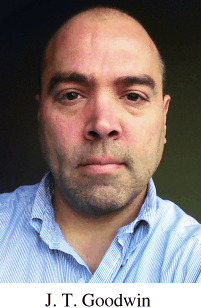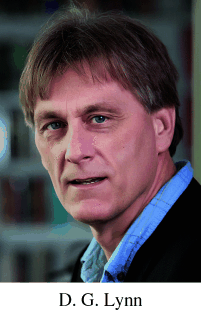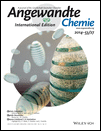Editorial: Holistic Education in Times of Specialization and Globalization†
The links to the activities mentioned in this Editorial are: http://www.lelavision.com/lynn.html, http://www.outofhandtheater.com/groupintelligence, http://www.prx.org/pieces/92683-emergence-when-1-1-doesn-t-equal-2, and http://www.order.emory.edu/.
Over the past decade, public awareness of the variety and stridency of the grand challenges facing our global community has increased tremendously. Environmental sustainability is core to many of these challenges as planetary resources are intimately intertwined with economic development, and their extraction and processing impact and are in turn affected by, our global climate. Access and utilization of the resources are buffeted again and again by our dynamic geopolitical “climate”. It is therefore vital that we, both within academia and as world citizens, work diligently to better understand the complexity of these challenges and how to find the most effective solutions.1


At the same time, we must continue to ask the big questions of science impacting our world, our Universe, our place within them, and how it all came to be. There is perhaps no greater and, to some, controversial question than that of how life began and evolved its remarkable diversity throughout the many varied environments here on Earth. Darwinian evolution theory and the scientific concepts of the origin of life both face significant societal resistance, and yet this research is vital to improving our understanding of how the diversity of life, on earth and its resident environments are dynamically connected to and dependent upon one another. We need to better understand the web of life’s connections with the environment in order to successfully address many of the grand challenges we face, and our universities and research centers bear primary responsibilities in meeting these objectives. These institutions are natural settings for innovative outreach and education, encompassing scholarship across all subjects and at all levels of the educational hierarchy.
Principles for the Development of a Complete Mind: Study the science of art. Study the art of science. Develop your senses—especially learn how to see. Realize that everything connects to everything else.
Leonardo da Vinci
Leonardo da Vinci, the quintessential Renaissance scholar, is an icon of the merging of science and art. The highly intertwined and complex nature of contemporary society is driving a similar horizontal integration of the sciences, humanities, and arts. This growing movement termed “STEM to STEAM” (that is, “science, technology, engineering, and mathematics” to “science, technology, engineering, arts, and mathematics”) employs a variety of artistic approaches to represent complex concepts by playing on all of the audience’s senses to capture information, to synthesize knowledge, and to ground the experience in personal perspectives. Given the myriad of ways in which people learn—visually, kinesthetically, and aurally— it is advisable to take multiple “shots on goal” to enrich understanding.
We have therefore engaged the broader community, both within and outside the university, through abstract and metaphorical illustrations of evolution at both the chemical and organismal levels. Events in traditional concert hall venues included “First Life” as a musical translation of the scientific concepts undergirding chemical evolution and origins of life as well as more avant-garde multimedia representations through sculpture and dance with Lelavision. Active public immersion with Out of Hand Theater’s “Group Intelligence” flash-mob has allowed audiences to experience self-organization and emergence, drawing personal narratives into scientific research and making connections back to events and experiences in nature that have captured our own imaginations as scientists and educators. Many of these STEAM projects have been federally supported. The EvolutionRevolution Symposium was a town hall meeting supported by Emory University in celebration of Darwin’s 200th birthday, where researchers and artists engaged the larger public in the future of evolutionary understanding to our society. The Atlanta Science Festival was community sponsored and attracted 30 000 participants in the celebration of science and art. These events are close to human experience, where art inspires a sense of wonder, joy, and beauty, lowering the barriers to learning and catalyzing the spread of the ideas and concepts beyond the boundaries of the laboratory.
Science is a way of thinking much more than it is a body of knowledge.
Carl Sagan
These public outreach approaches inspire the same qualities of curiosity, exploration, and creativity foundational to progress and innovation in research, and encourage renewed engagement in education. In this way, science and art become autocatalytic, where “art as a way of knowing” is coupled with “science as a way of thinking”. The mission of the university is not just to educate beyond its borders, but also to focus on its community, vertically throughout the student and mentor hierarchy. How then do we capture participation across all learners, regardless of their preferred learning style, to foster and empower intellectual entrepreneurship? ORDER (On Recent Discoveries by Emory Researchers), initially funded by the Howard Hughes Medical Institute Professorship and now fully supported by Emory University, explores nature’s inherent order across all academic disciplines. Ten research fellows are selected each year on the basis of their scholarship, the cohort is divided in half in order to develop two distinct and parallel course curricula, and challenged to teach their discoveries collaboratively to entering college students and then to graduating seniors. This year’s courses, “Risk and Resilience in Shaping Identity” and “EXPOSED: Environmental Influences and How They Shape Us”, include scholars from the Departments of Chemistry, History, Neuroscience, Philosophy, Psychology, Radiation Oncology, and Religion, and engage faculty oversight from the Departments of Biology, Chemistry, and Theater Studies. The shared experiences extend our ways of knowing and diversify our ways of thinking, enriching dialog horizontally across the university community.
STEAM engagement at Emory University and elsewhere arise from recognizing that understanding complex and potentially controversial concepts demand many ways of knowing. We are now positioned to capture the diversity of ways people learn, how they assimilate information, and recognize how knowledge must radiate across the whole of our complex society to meet our grand challenges. We need not merely increase the number of STEAM graduates, but we must also provide the opportunity for these students to experience a true integration across the arts, humanities, and sciences, leading to, as Leonardo da Vinci so eloquently phrased it, “The Development of a Complete Mind”.





